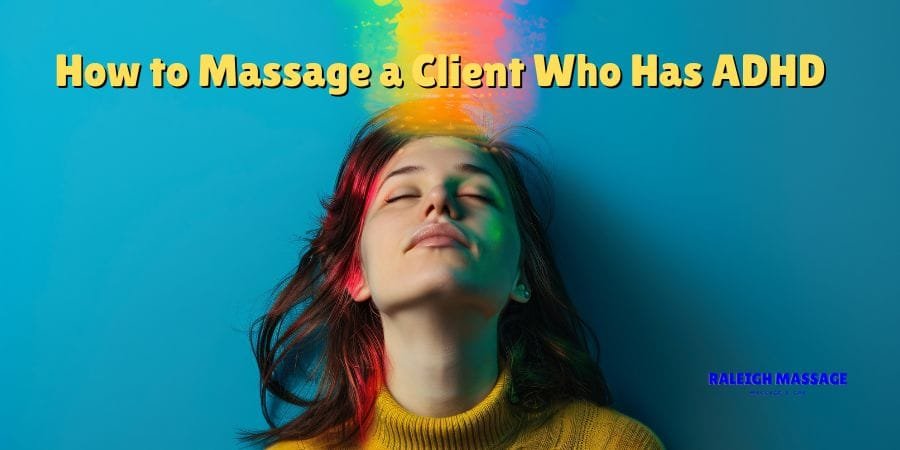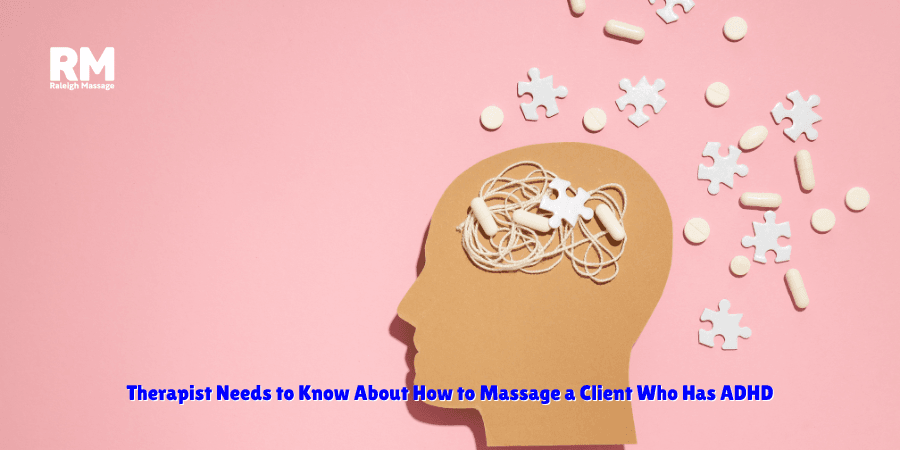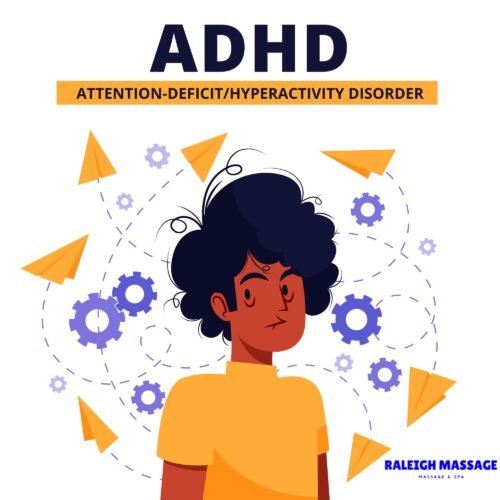Hey, in this blog, we will learn how to massage a client who has ADHD and explain everything you need to know. How can you get rid of it withEverything a Therapist Needs to Know About How to Massage a Client Who Has ADHD. The whole topic will be discussed.
When you massage a client who has ADHD, things feel different. Their minds race. Their body moves. Stillness is a challenge. I know because I’ve worked with clients who struggle with it. You want to help them relax, but their energy is unpredictable.
Understanding ADHD in Massage Therapy
For a person with ADHD, a calm environment must dominate in the massage room. Overwhelming lights can become overstimulation. Overwhelming scents could become distracting. I dim lights, quiet down, and have a tidy environment.
I also speak with my client beforehand. Some need quiet. Others settle down with ease through conversation. I remind them it’s okay when they fidget. I allow them to have a break when they need one. Flexibility trumps routine.
Creating a Comfortable Environment
For a client with ADHD, the massage room should feel like a safe space. Bright lights can be overstimulating. Strong scents might be distracting. I dim the lights, lower the volume of music, and keep the space uncluttered.
I also talk to my client beforehand. Some need silence. Others relax better with conversation. If they fidget, I reassure them it’s okay. If they need breaks, I allow it. Flexibility matters more than routine.
Choosing the Right Techniques
Not every technique works the same way for clients with ADHD. Some need deep, grounding pressure. Others respond better to rhythmic, rocking movements. Here’s what has worked for me:
- Deep Pressure Massage:It helps calm hyperactivity by providing steady, even pressure. Long, slow strokes encourage relaxation.
- Rhythmic Movements: ocking motions or gentle compression feel soothing. They help the nervous system reset.
- Trigger Point Therapy: Some clients with ADHD hold tension in specific areas. Slow, targeted pressure helps release it.
- Guided Breathing: Encouraging deep breathing can reduce anxiety and improve focus.
Every client responds differently. I always ask what feels good. I watch their body language. If they seem uncomfortable, I change my technique.
Managing Sensory Sensitivities
People with ADHD often have sensory processing differences. Some are sensitive to touch, while others seek more input. It’s important to:
- Use consistent pressure to avoid startling them.
- Avoidlight, ticklish strokes if they are sensitive.
- 400;”>Let them choose the type of oil or lotionif scents overwhelm them.
- Ask abouttemperature preferences—some clients overheat easily.
When I work with ADHD clients, I stay patient. I observe. I adapt. Their experience should feel comfortable, not overwhelming.
Allowing Movement and Breaks
Stillness can feel impossible for someone with ADHD. Instead of forcing them to stay still, I encourage natural movement. If they need to stretch before lying down, I let them. If they shift positions often, I adjust my approach.
Breaks are okay too. Some clients benefit from short pauses. They sit up, stretch, then return to the table. I work with their needs, not against them.
Communicating Effectively
Clear communication makes a huge difference. I explain what I’ll do before I begin. I check in often but don’t overwhelm them with questions. If they prefer silence, I respect that. If they need to talk, I listen.
I also set expectations. If they struggle with time management, I remind them of session length. If they hyper-focus on sensations, I guide them back to relaxation.
Why Massage Helps ADHD Clients
Massage offers incredible benefits for those with ADHD.
- Reduces anxiety:The nervous system calms down, making relaxation easier.
- Improves Sleep: Many ADHD clients struggle with sleep. Massage promotes better rest.
- Enhances Body Awareness: Touch helps them feel more connected to their body.
- Decreases Hyperactivity: Deep pressure techniques soothe excessive energy.
I’ve seen clients come in feeling scattered and leave feeling grounded. Massage doesn’t cure ADHD, but it makes life a little easier.
Every individual with ADHD is an individual case. What works for one will not work for everyone else. As therapists, our role is to listen, adjust, and make them comfortable in a safe environment.
If you’re not certain about working with an ADHD client, then simply ask them first. Let them direct you. And most importantly, have patience with them.
For a supportive massage experience, visit Raleigh Massage.
FAQs abouts
1. Can massage therapy ease symptoms of ADHD?
Yes, massage melts tension, sharpens concentration, and brings about a state of tranquility. Techniques of deep pressure settle hyperactivity, and rhythmic motion brings about a state of calm. Clients sleep and report less anxiety following routine sessions. It’s not a cure, but it helps overall wellness.
2. What is most beneficial for a person with ADHD?
Deep tissue, Swedish, and rhythmic compressions can work effectively. Everyone is a little different and will have specific requirements. Some require strong pressure, and some require soft touch. Communication with them is important in discovering what works best for them.
3. How can a fidgety client be managed during a session?
Encourage spontaneous motion and not forced immobility. Let them move between positions and break for a short period when in need. Apply deep pressure or rocking motions, for example, in an attempt to settle them down.
4. Do ADHD clients have increased sensitivities to touch?
Some are oversensitive, and others require additional stimulation. Adjusting for pressure, not tickling with strokes, and allowing them to become comfortable with temperature and textures is important. Asking them about them beforehand will stop them becoming uncomfortable during a session.
5. How often should someone with ADHD get a massage?
They depend on them. Weekly, and sometimes biweekly, sessions can maintain a level of tension and promote relaxation. Others can use monthly sessions to their advantage. Consistency is most important for long-term gain.









